Each name links to more information on identification and management.
Click on photos to enlarge
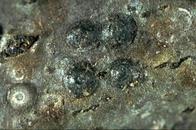
San Jose scale nymphs (healthy)
Identification tip: The four round, dark scales in the
center are the black cap stage, the most common overwintering
form. The earlier white cap stage is to left. |
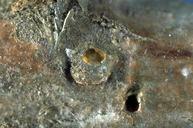
San Jose scale (parasitized)
Identification tip: Scales parasitized the previous season
will have a round hole in them where the adult parasite emerged. |
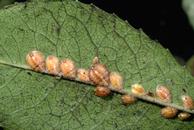
European fruit lecanium nymphs (healthy)
Identification tip: Look for legless, immobile yellow
insects on twigs. Older nymphs may have brown markings and a
distinct center ridge. |
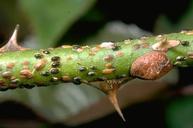
European fruit lecanium
scale (parasitized)
Identification tip: Parasitized lecanium nymphs turn black. |
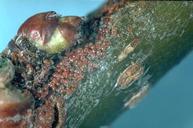
European red mite eggs
Identification tip: Masses of eggs may be laid together.
Each slightly flattened red egg has a long, spinelike projection,
called a stipe, at the top that can be seen with a hand lens. |
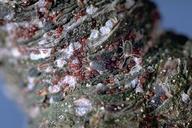
Brown mite eggs
Identification tip: Brown mite eggs (shown here with adults)
look like those of European red mite, but lack the stipe. |


